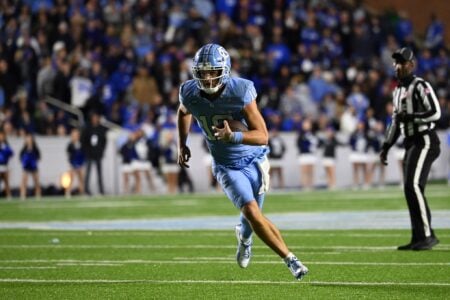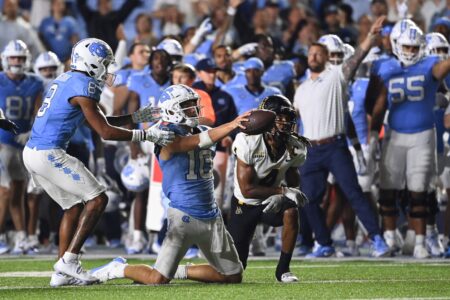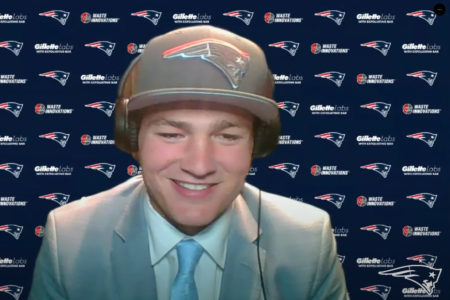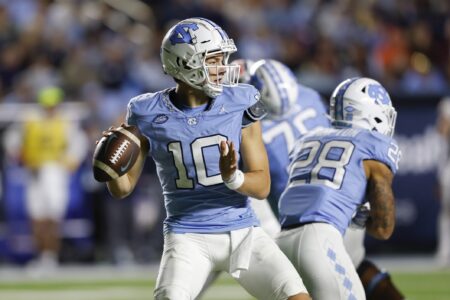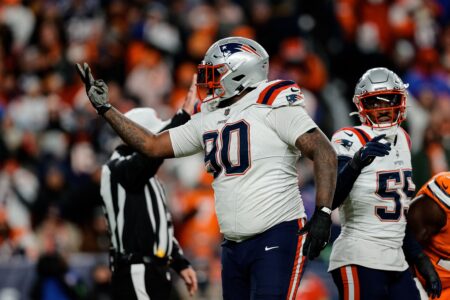Of course I am talking about potential profitability! A new labor deal factors directly into that. And I have no idea how you think $18million is a modest amount. That would be over a 50% increase to the average NFL team's bottom line! Even to the Cowboys it would be an over 10% increase. Any new investor is going to have a huge debt service and will need to consider further reinvestment of profits to raise the top line. This is a huge annual addition to their budget.
And as for the rest, there is no such thing as "ever-increasing demand". Eventually every market reaches its saturation point. Is the NFL there yet? Who knows, but once that happens you are going to see a drop in the spread between profitability and value.
And again, I don't think your chart shows what you think it does. All it shows is that there was an outlier in 2006 for some unknown reason. Throw that one year out and profitability is relatively flat since 2004 despite revenue growth. Until you know what caused the drop in 2006 the chart is basically meaningless. This is the problem of reviewing summary data without the understanding of underlying drivers. Overall trends are somewhat meaningful but individual data points can be misleading.
You're a little confused about what the chart is meant to convey. If you want a clear picture of long-term trends in the NFL's profitability, you'll have to look at a wider time frame. The purpose of this chart, both in my use of it, and in its context on Forbes.com, is to counter the assertion that the putatively player-friendly and unsustainable 2006 CBA hamstrung league profits. That there was robust year-to-year growth in operating income during every year under the '06 CBA thus far is some inarguable evidence to that effect. If the 2006 CBA did have a negative affect on league profitability, it was clearly not potent enough to prevent gains over its tenure.
This shouldn't actually come as a surprise, however, as a writer for a Cowboys website demonstrated, using Forbes' numbers,
that player compensation as a percentage of the NFL's unadjusted revenue stayed almost exactly the same under the '06 CBA as it had been since 2000. (It actually was around 1.5% lower, post '06 CBA.)
This is hardly an accident. The NFLPA went from getting a larger share of a smaller number of revenue sources to getting a smaller percentage of all but a few of the NFL's revenue sources, and the exact figures that were settled on were calculated to keep the percent of revenues going to player compensation stable, as opposed to steadily decreasing, as they would had the players' compensation still been tied to only league-shared revenues, which every year represent a smaller percentage of the NFL's TR.
Meanwhile, you keep raising this boogeyman of a sudden and spontaneous market saturation and decline in growth, as if just because it's possible, we have to consider it somehow likely. The problem is, there's just no evidence to suggest that this limit actually exists. Sports, in general, have never been more popular, available and profitable, than they are today, and all of the biggest ones have been around for over a century. It would be a sociological anomaly of historical proportions for people to suddenly lose interest in spectator sports.
Now, what makes the NFL's continued rise in profitability so likely, though, are the rapid developments in media and information technology creating so many more diverse ways of repackaging selling anew the NFL's product. The NFL still has enormous room for growth in terms of live online broadcasting, online supplemental broadcasting, interactive program broadcasting, etc. There are also myriad opportunities outside of game days -- fans clearly want a more and more immersive NFL experience, and there are lucrative ways of providing that. At the moment, many NFL franchises discourage their players from tweeting. Soon enough, they'll probably be contractually obligated to, which will be aggregated and filterable on NFL.com.
And if all this wasn't enough, the NFL still has plenty of room for growth internationally, where it's only just starting to get a foothold.










